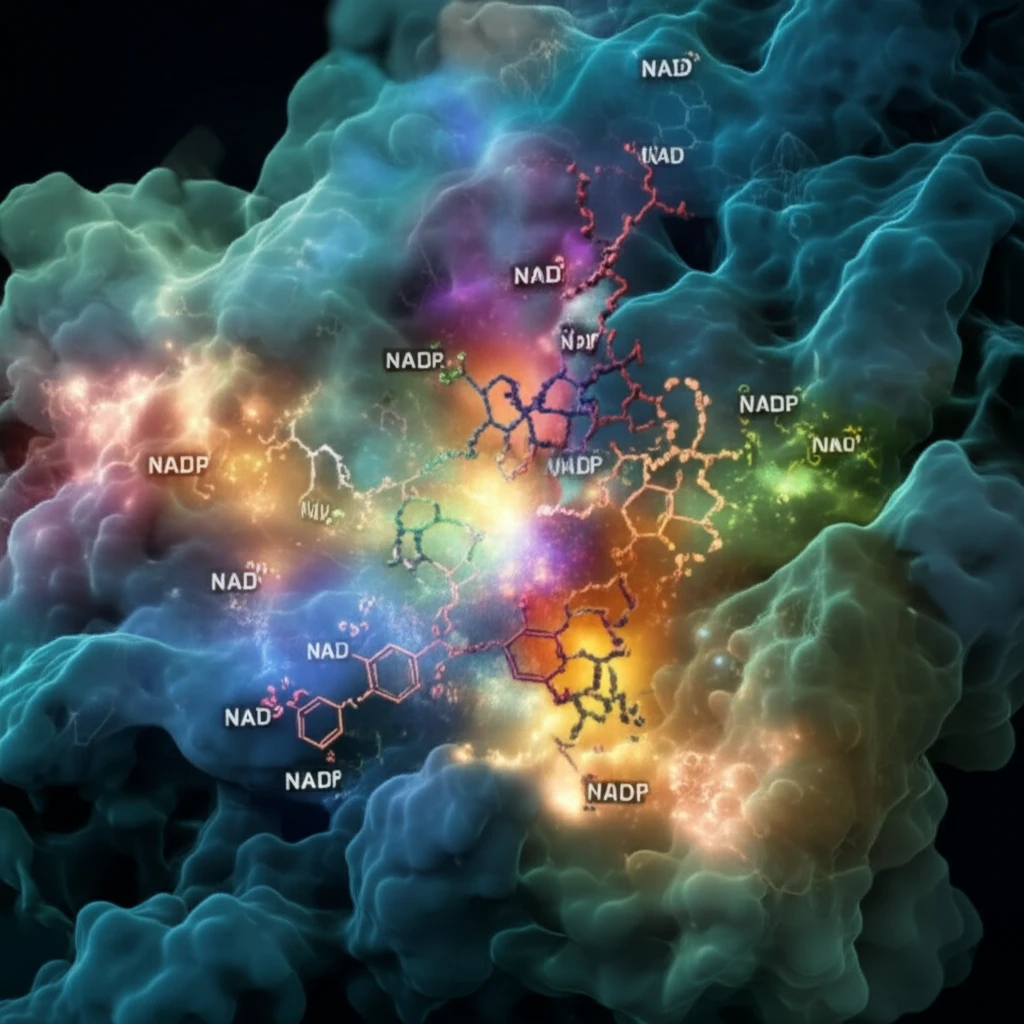
Enzyme Engineering: Can We Make Enzymes Work Better for Us?
"Unlocking the potential of oxidoreductases through protein engineering for improved specificity and efficiency."
Enzymes are nature's catalysts, speeding up chemical reactions with remarkable precision. Among these, oxidoreductases are a vast group, playing a critical role in transferring electrons from one molecule to another. These enzymes are indispensable in various industrial applications, enabling processes that are environmentally friendly and highly selective.
Many oxidoreductases rely on nicotinamide adenine dinucleotide (NAD) or its phosphorylated form, NADP, as coenzymes. These coenzymes aren't just helpers; they're essential for the enzyme to function. However, NAD and NADP have different properties—stability, cost, and availability—making the enzyme's preference for one over the other a significant factor in practical applications.
Scientists are exploring ways to manipulate enzyme coenzyme specificity through protein engineering. This involves modifying the enzyme's structure to favor one coenzyme over the other, aiming to enhance its performance in specific industrial processes.
What is Coenzyme Specificity and Why Does it Matter?

Coenzyme specificity refers to an enzyme's preference for either NAD or NADP. Enzymes involved in building molecules (anabolic processes) often prefer NADP, while those breaking down molecules (catabolic processes) typically prefer NAD. This preference is dictated by the enzyme's structure, which creates a binding pocket tailored to fit either NAD or NADP.
- Cost Reduction: NAD is generally more affordable than NADP, making it desirable for industrial processes.
- Increased Stability: NAD often exhibits greater stability than NADP, which can be advantageous in certain applications.
- Improved Efficiency: Tailoring the enzyme to use the more readily available coenzyme can streamline metabolic pathways and enhance overall process efficiency.
Challenges and Future Directions in Enzyme Engineering
While altering coenzyme specificity holds immense promise, it's not without its challenges. One major hurdle is maintaining or even improving the enzyme's catalytic activity after modification. Often, changes that favor the desired coenzyme can compromise the enzyme's ability to perform its primary function efficiently. Computational tools and algorithms are becoming increasingly valuable in guiding protein engineering efforts. These tools can help predict the effects of mutations on enzyme structure and function, streamlining the design process. As technology advances, the ability to tailor enzymes for specific industrial applications will become more precise, revolutionizing various sectors.
